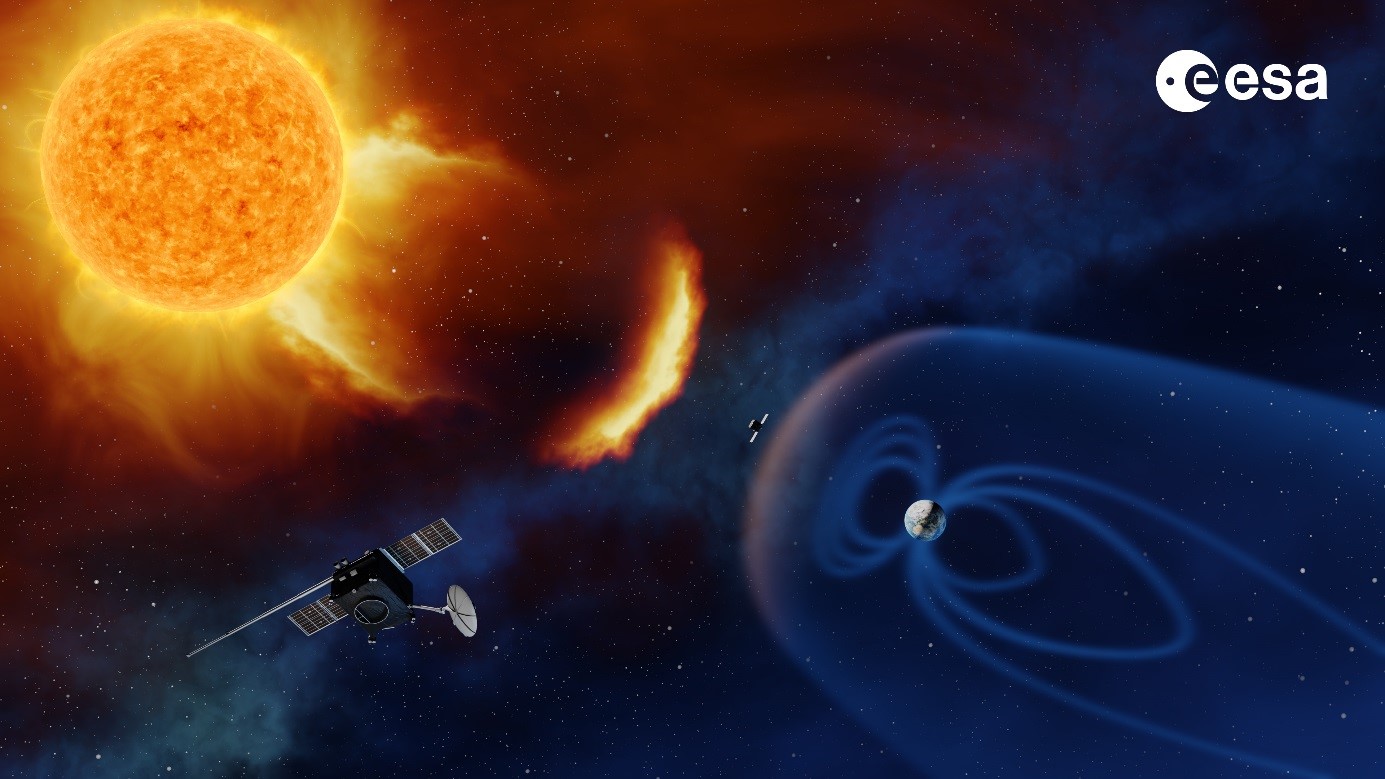Darmstadt / Bremen – OHB System AG, a subsidiary of the Bremen-based space and technology group OHB SE, today signed a contract with the European Space Agency ESA for a study on the satellite-based observation of weather phenomena in space. Proposals for the “Lagrange Mission” study had been requested under ESA’s “Space Situational Awareness” program. The contract is valued at EUR 3.3 million. OHB System AG will be conducting one of two parallel studies. Specifically, it will be exploring a mission on “Lagrange Point 5”, which is located around 150 million kilometers from the earth.
Currently, the space environment surrounding the earth is largely being monitored by ground-based systems. For example, such residual objects as “space debris” are observed and classified using radar systems and telescopes. A similar situation also applies to the observation of space weather effects, which are also monitored from the surface of the earth.
A particular focus is placed on the sun as it exerts a material influence on the earth’s environment in space as the central star in our solar system. However, many effects can be measured a good deal more efficiently in space, e.g. by using satellites. Although some satellites, such as the ESA-NASA “Soho” probe, are being used specifically for this purpose, they are already very old and must be replaced soon.
“Solar activity has an enormous impact on satellites and can also affect infrastructure on the earth,” explains Marc Scheper, head of the study at OHB System AG. “High-energy particles from the sun can not only damage the sensitive electronic systems fitted to satellites but also interfere with telecommunications networks and electricity grids on the earth. Extreme events may even trigger widespread power outages. For this reason, ESA and NASA are jointly planning to install a satellite constellation for observing the sun. We are thrilled to have been awarded the contract to conduct a study on the Lagrange Point and are working hard to achieve the goal of also receiving the satellite contract.”
The satellite constellation will extend the advance warning period for space weather effects from just a few hours to four or five days. Overall, the technology will substantially enhance the resolution, quality and speed of solar observation. “This mission is a prime example of how the benefits of space travel can be made clear to the public,” says Andreas Lindenthal, a member of OHB System AG’s Management Board. “Year for year, these space weather effects cause damage in the billions to satellites and terrestrial infrastructure. Accordingly, this system will be of great benefit for the economy as a whole as well as for individual businesses. We are very pleased to be able to assume a leading position at such an early stage in an area of enormous importance for the future. What is more, OHB has previously worked on studies concerning space weather missions as well as asteroid deflection, which address related issues in the area of space situational awareness. Thanks to our contributions to the next-generation European meteorological satellites in the MTG program, we have a great deal of experience with similar satellites and can offer innovative solutions.”
“We are relying on European industry to provide the expertise and new infrastructure needed to implement ESA's Space Situational Awareness Programme," said ESA-Director-General Jan Wörner. "Study contracts for a future space weather mission are a crucial step in moving forward with a set of full services to protect critical civil and economic activities.”
In the frame of the lagrange-mission ESA awarded two futher studies to identify the required instruments. OHB System contribute to one of the studies as sub-contractor with the instrument “magnetometer”. It measures the interplanetary magnetic field in three dimensions around the spacecraft.
The Lagrange mission was named for the Italian astronomer and mathematician Joseph-Louis Lagrange, who lived in the 18th century. He defined five points along the earth’s orbit around the sun at which there is no gravitational pool between the two celestial bodies. As a result, space probes appear to be stationary at these points. Lagrange Point 5, for which OHB is now developing a probe, is located 60 degrees behind the earth and is considered to be particularly stable despite its enormous distance from the earth.
Contact for media representatives:
Marianne Radel
Head of Corporate Communications
Phone: +49 421 2020 9159
Email: marianne.radel@ohb.de
Contact for investors and analysts:
Marcel Dietz
Investor Relations
Phone: +49 421 2020 6426
Email: ir@ohb.de

